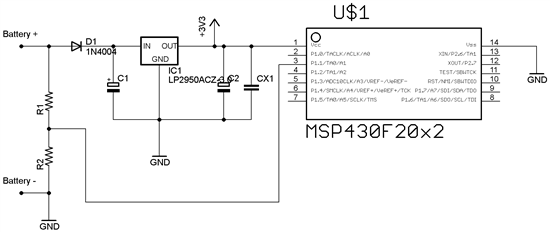Hi forum,
I am trying to build a simple Voltmeter to measure voltages between 0-15V, I'm planning to power the circuit directly from the battery which i am measuring. My schematic is as above.
I know its not good practice to power the circuit from the source which is being measured, but i just want to display the measured voltage on 4 LEDs, i,e 10v_11V, 11v-12V, 12V-13V and 13V -14V range. When the battery is connected the correct way i don't see any problem, but when the battery is connected reverse, will the Circuit survive.
I have a diode in series to the regulator, but i am not sure about the internal clamp diodes which are available on the I/O pins, will the high voltage pass thru the Potential Divider, internal clamp diodes and reach Vcc thereby destroying the micro.
any suggestions would be welcomed and appreciated.
Regards,
Nischay


